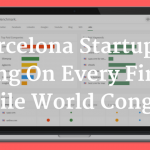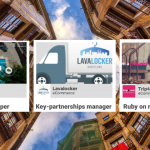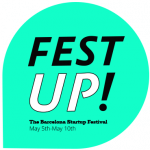The following is a guest post by Albert Pereta. Albert is a creative entrepreneur based in Barcelona and the co-founder of Iceber.gs and WiseList. Learn more about Albert’s product design skills and contact him here.

One thing you learn very quickly when building a start-up is that you know nothing. Unless you’re a serial entrepreneur with a few success stories and failures under your belt, you probably know nothing.
I’m not saying this to discourage you, but to tell you that you might have the greatest potential to innovate when you actually know nothing.
Yes, of course, experience is invaluable. It lets you move faster, make confident decisions, and act effectively on many aspects of your venture. However, when looking for original ideas and innovative solutions, knowing nothing can be exactly what you need, especially if you know how to wield your ignorance correctly.
Before we continue, let me be crystal clear on one thing: I hate ignorance. You should do everything within your power to understand something when you don’t have any previous knowledge on the subject. But, before jumping into articles, books, inspirational guides, or your rolodex of advisors… Stop. Just stop and think.
Ironically, the very first time I noticed how powerful it could be to know nothing came while I was working in my own area of expertise. As the co-founder and creative director of two startups, I have to create entire applications with complex interactions wrapped in extremely simple user interfaces. Building something that thousands of people will use over and over again is quite a challenge. We constantly have to come up with original ideas to meet the needs of a multitude of users.
Every time we had a problem we’d face it like this:
1. First, we’d analyze the problem.
2. Then, we’d have our first innovative idea on how to solve it.
3. But then, we’d imagine the impact of a bad idea on our thousands of users.
4. And we’d panic.
5. From there, we’d jump into articles, books, references, competitors and advisors looking for a solution.
6. In the end, we’d end up remaking someone else’s solution.
So then, how CAN we innovate? The answer is actually quite simple:
When you get to step 4, avoid step 5, and go back to step 2.
This means only one thing: Think, Stop, and Think again.
Go as far as you can with your own ideas. Once you get to the finish line you’ll probably fail many (many) times, but eventually you’ll start creating new ideas. You’ll begin to think differently without having to look over everyone’s shoulder to see how “they” are doing it.
If you do it right, you’ll actually notice “them” looking over your shoulder.
The best part of this innovation process is that you can apply it to so many things: From your product design to your business strategy, from user experience to raising money.
The key is to trust yourself and remember to: Stop and Think. Again.







Leave a Reply